Playworkers, Ph.Ds, and the Growing Adventure Playground Movement
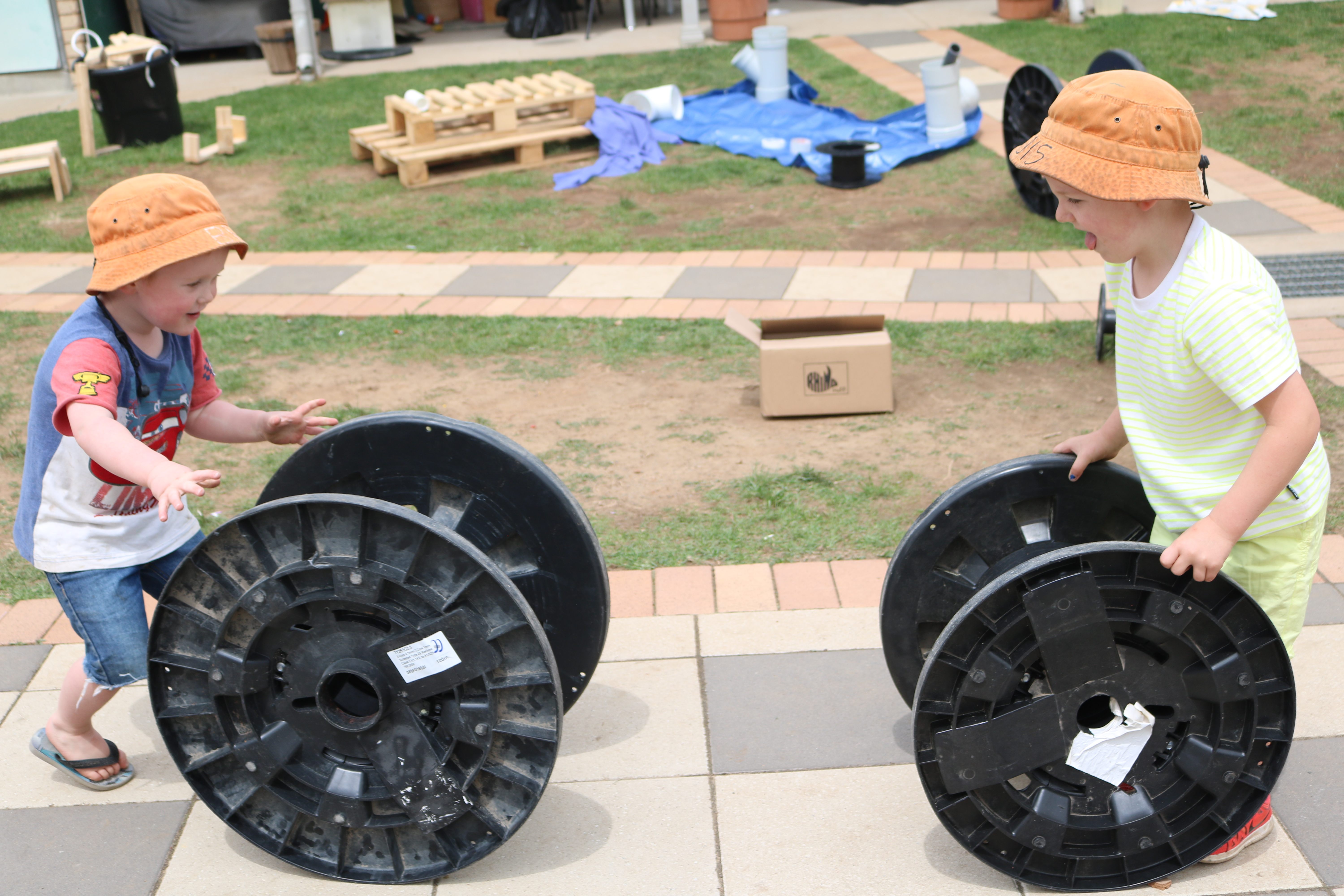
Create your own adventure. (Photo: Suzanna Law/Pop-Up Adventure Play)
More and more people are considering a new degree: Ph.D in Playwork.
Why? Because children’s play has lost its way. Across the world, according to a pair of academics, adults have become stifling and engineering, domineering and overcalculating in their oversight of how kids bide their time. Urbanization has certainly played a role, limiting “playgrounds” to rigid metal structures lacking the magical potential of backyards, fields and forests. But parenting trends have also been moving in an increasingly hands-on direction, influenced in part by practical concerns such as safety and bullying, but also by a hungry desire for measurable results and a general distrust of children’s abilities to teach themselves—to control the content and direction of their own play, whether it involves crayons or saws.
Morgan Leichter-Saxby and Suzanna Law are working on PhDs in Playwork at Leeds Beckett University in the UK, which recently appointed the world’s first Professor of Playwork. Their PhD adviser, Dr. Fraser Brown, describes playwork as “non-judgmental, non-directive and largely reflective.” The “three Frees” of play require that it be freely chosen, free of charge, and that children must be free to come and go as they please.
Adventure play can take a variety of forms, ranging from natural spaces with treehouses and twine forts reminiscent of Huck Finn or Pippi Longstocking, to dump-like playgrounds filled with old tires and plastic junk, to temporary arts and crafts gatherings. One of the most critical components of adventure play are playworkers, a group of trained staff who are able to trust the children and watch their progress and learning, adults who guide, monitor and support without intervening.
Leichter-Saxby and Law are currently on a six-country world tour promoting Pop-Up Adventure Play, an organization they founded in 2010. Registered as a charity, Pop-Up Adventure Play functions under the belief that “children have the right to play as they please, and that a place that supports children’s play benefits everyone.” It doesn’t seem like a revolutionary concept, but some are realizing that in some ways, it is. The values behind adventure play have caused a growing number of adults to recognize the ways in which they are constricting children’s creativity.
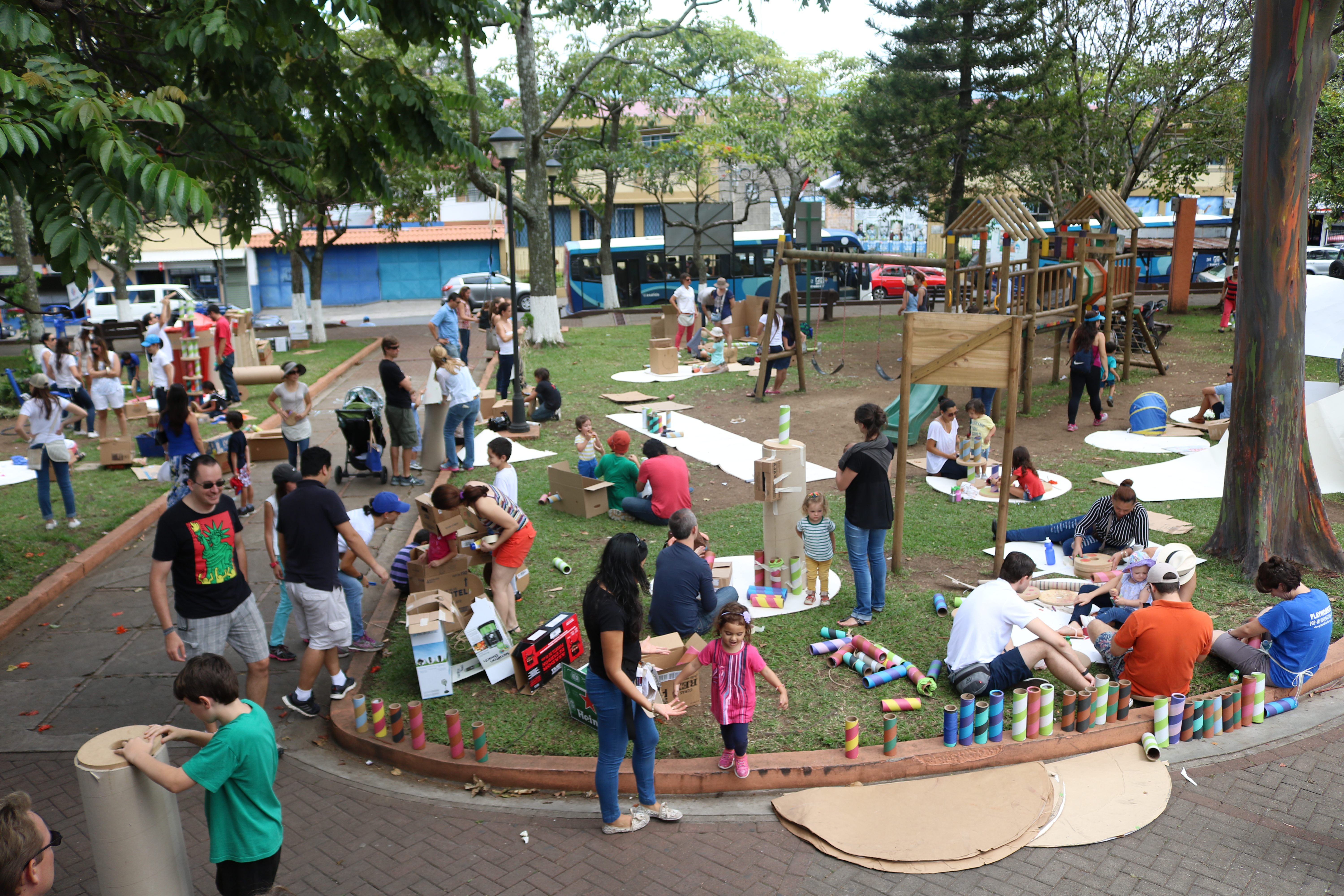
The divine mayhem of proper play. (Photo: Suzanna Law/Pop-Up Adventure Play)
When Leichter-Saxby came across her first adventure playground, she says “the vibe was like nowhere else on earth.” She and Law became play rangers, a type of playwork which involves bringing play into play-deprived communities. The more work they did, the more they felt that this was something that America really needed.
With Pop-Up Adventure Play, they wanted to create an accessible model of an adventure playground and provide the basic ideas to get people started. Anyone can access their free Pop-Up Play Shop Toolkit and Resource Pack, and ask for advice on how to get started. There have now been pop-ups in around 17 different countries, temporary projects intended to create momentum for long-term objectives.
Across different countries and neighborhoods, Leichter-Saxby and Law have observed that while governments have different initiatives, the main issues stay the same. “In Bogota, they’re saying the militia moved the drug lords out, and nobody knows their neighbors,” says Leichter-Saxby. “In Park Slope, it’s concerns about childcare, educational agenda, and testing that are overwhelming parents; kids aren’t playing outside, and nobody knows their neighbors. All around the world, there are shared problems of standardized testing, collapsed social networks, a mistrust of public space… From people in wildly different circumstances, you have the same stories about barriers to play.”
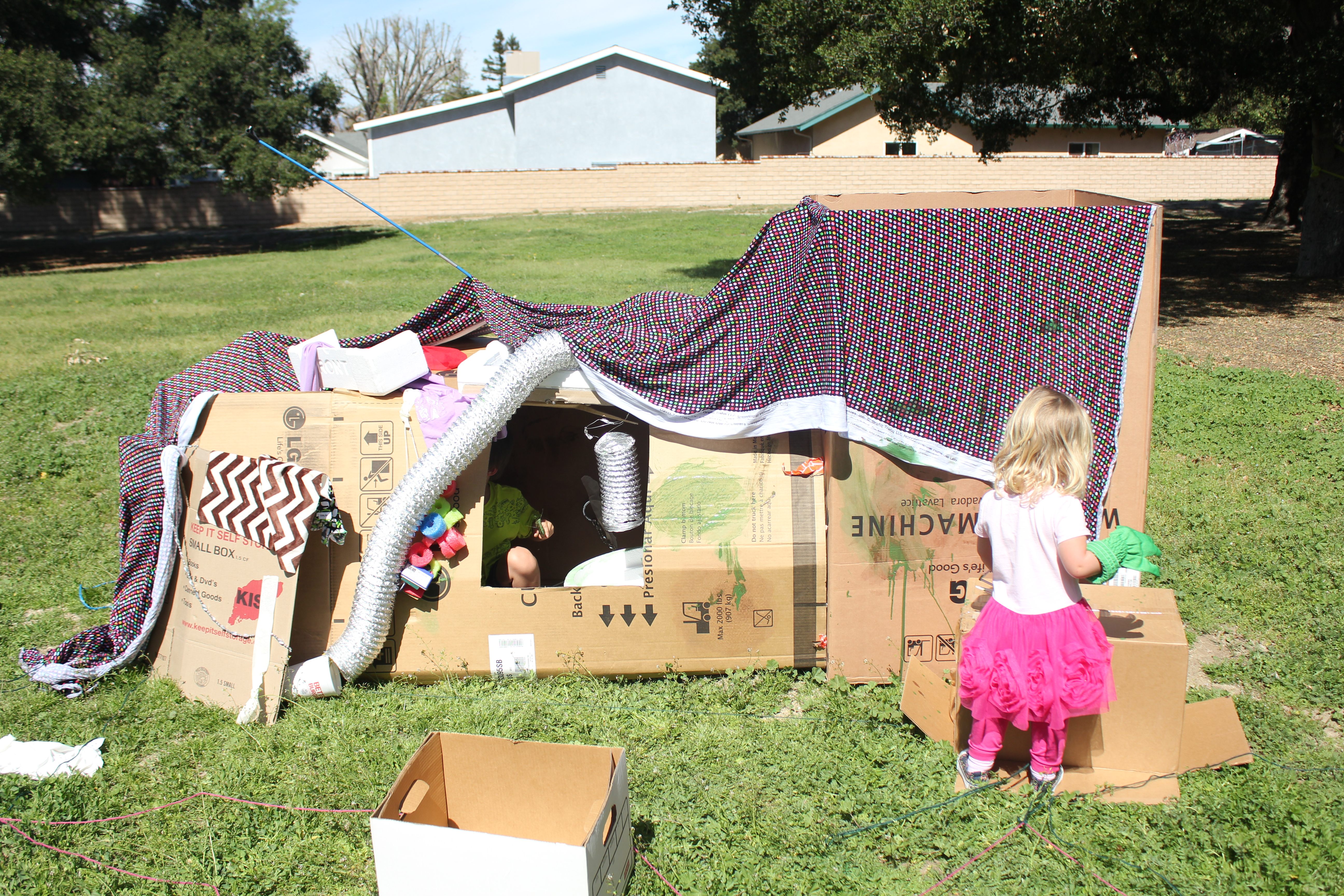
Best playground ever. (Photo: Suzanna Law/Pop-Up Adventure Play)
The two women have helped to create pop-up adventure play in museums, parks, parking lots, and empty shops. “We meet people where they are, rather than asking them to come to us,” says Law. Adventure playgrounds evolve organically to meet a community’s immediate needs, meaning that no two playgrounds will be the same. It’s a matter of incremental risk and cultivating awareness. “I think a lot of adults today think that they’re afraid of fire and sharp tools with children—but they’re really afraid of letting children do what they please,” says Law.
Erin Davis is the director of a short documentary about The Land, an adventure playground in Wrexham, Wales known for its edginess and unconventional levels of autonomy.
At The Land, children can climb trees and make fires, work with saws and hammers, and very much build their own adventure. The reason this can work is that The Land is a very insular community, and the riskier elements are possible due to the playworkers who eliminate real safety hazards like stray nails, as well as their intimacy and familiarity with the same group of kids. “Something like The Land would not be safe in a place like New York City, where people are playing once, if they’re visiting, or come with a school group for an afternoon,” explains Davis.
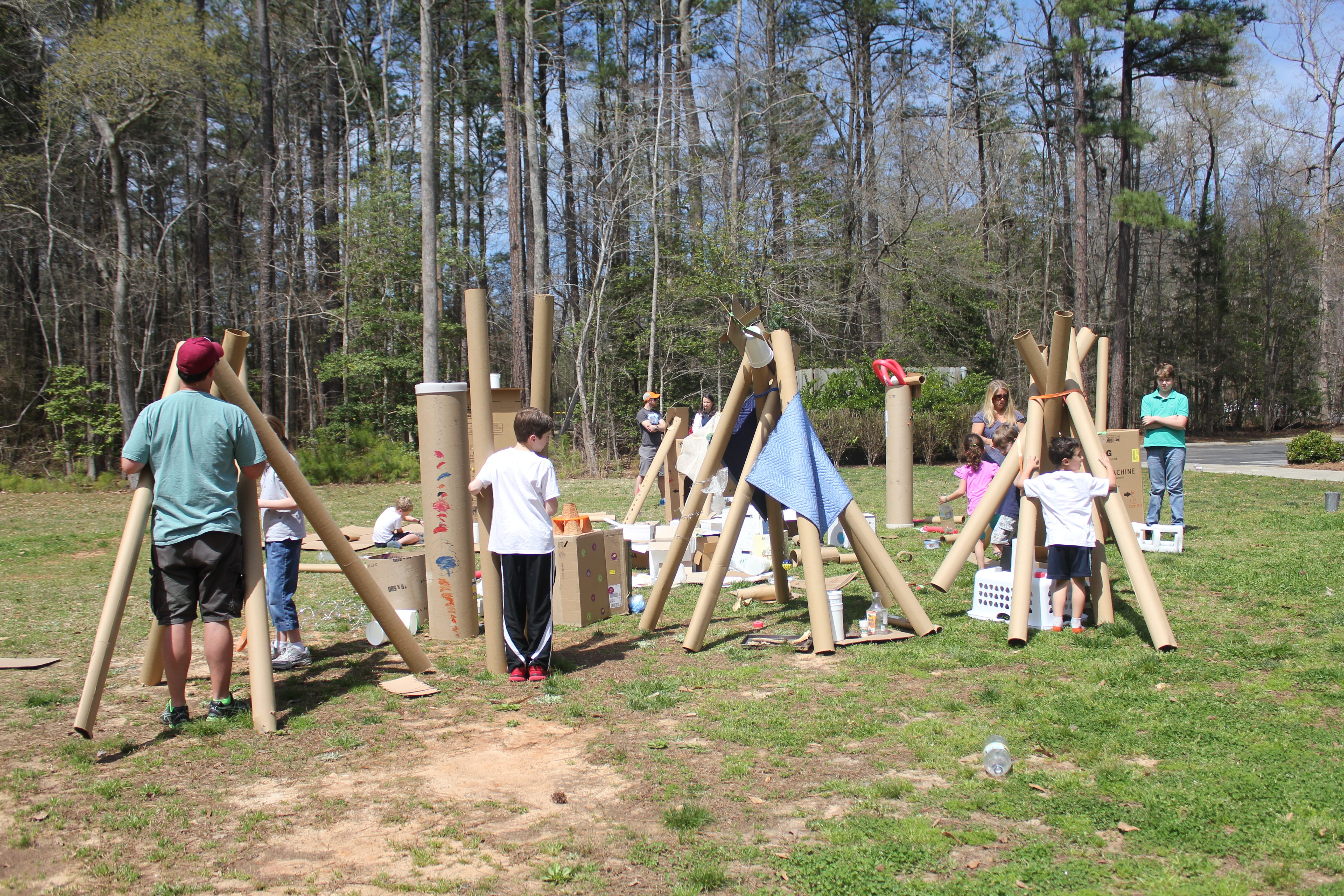
With adventure play, kids can build the playground they want. (Photo: Suzanna Law/Pop-Up Adventure Play)
Compared to hundreds across the UK and Europe, there are only five or six adventure playgrounds in the U.S. Perhaps the most high-profile for its incorporation of both moving parts and playworkers is Manhattan’s Imagination Playground, established in 2010, which rejects the fixed equipment model and instead offers oversized foam blocks that kids can move around.
“What captured my attention was the idea of playwork, and what it takes for an adult to support play,” Davis says of her time working on the film. “I was definitely reminded how competent children are; they get no credit for being smart creatures—clever, wise, and creative when given the opportunity.”
“It is how children explore and experiment, testing themselves, taking risks on their own terms and discovering how they function—what they like and don’t like—as much as discovering how their world works and how it responds to them,” she says.
England and Scotland have both launched campaigns for children’s play, but in the U.S., playwork has struggled to gain footing. “Ultimately, adult agendas have gotten in the way of adventure playwork blossoming in the U.S.,” says Law. She says Americans seem to prefer the “carefully curated baskets of joy” you get at preschools to the dirtiness and chaos of an adventure playground.

Regular playgrounds start to feel rather sterile. (Photo: Ildar Sagdejev/WikiCommons CC BY-SA 4.0-3.0-2.5-2.0-1.0)
Jeremiah Dockray and his wife Erin Larsen are spearheading Santa Clarita Valley Adventure Play in their community of Val Verde, 30 minutes north of Los Angeles. Dockray came across adventure play in an article from a ways back where adventure playgrounds were described as a parable for anarchy. He thought the playgrounds were extinct, but he found the concept amazing and wanted something similar for their five year-old son. The couple discovered an abandoned park in their neighborhood, saw it was for sale, fell in love with it, and bought it. They signed up for an online class offered by Law and Leichter-Saxby and began started to adopt the pop-up model for outreach to their community. For nearly two years, the couple has been doing pop-up playgrounds at least once a month, as well as working to make some inroads with local parks and recreation officials and public and charter schools, trying to get some adventure play concepts into schools and recess.
Right now, their permanent spot is being very slowly developed. “We’re trying not to head into it so fast that we make something that nobody actually asked for,” says Dockray. “What we’re trying to do is basically get to know as many of the families in the area.” They want to offer a physical and mental space that kids aren’t usually allowed in more regimented environments. “It’s a local idea, to help each other, look out for each other, day in and day out, for kids to come in and work on projects for weeks and weeks, months and months,” says Dockray. “To change the playground as they change—that’s the romantic vision, anyway.”
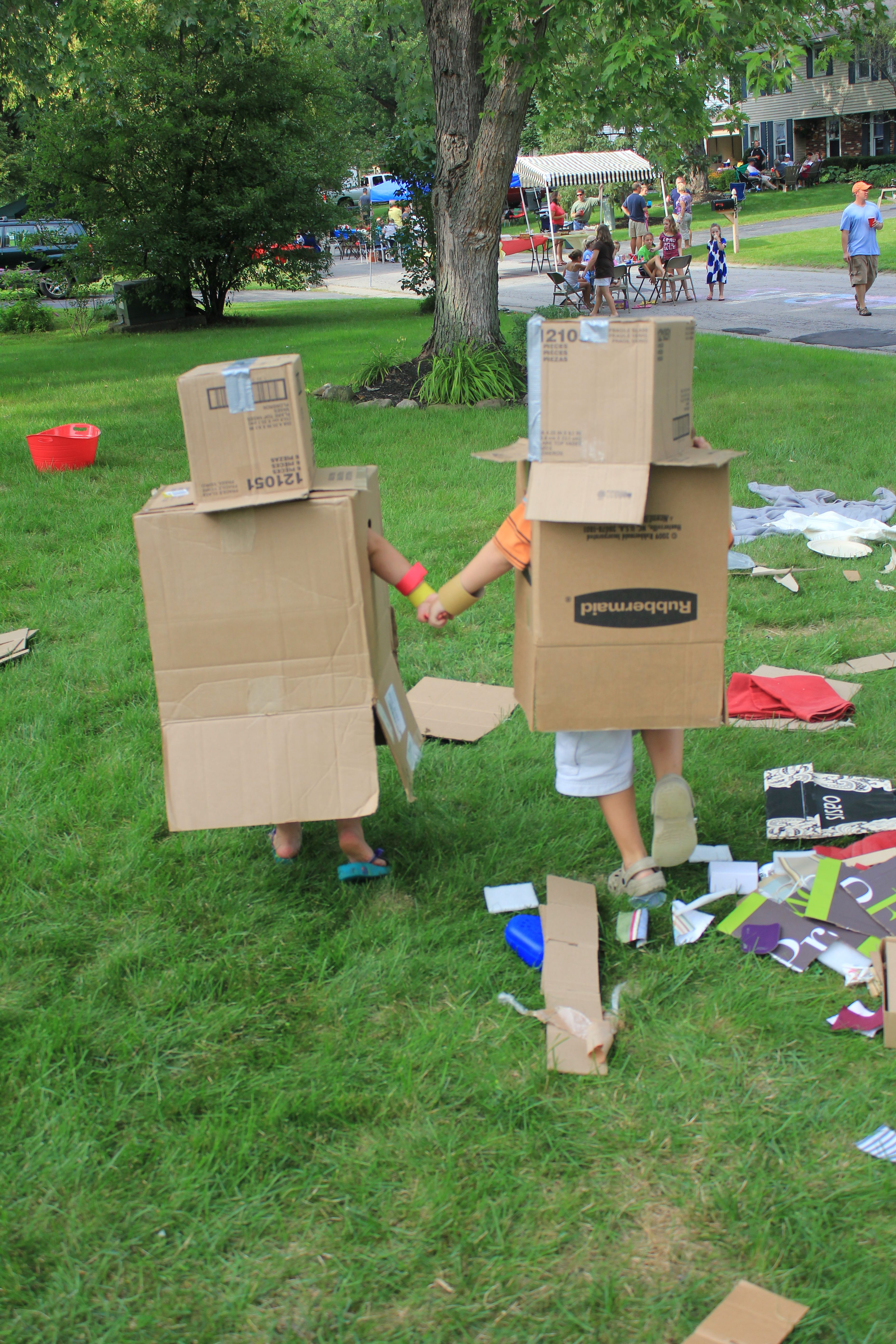
Neighborhood pop-ups bringing communities together. (Photo: Suzanna Law/Pop-Up Adventure Play)
The community response has been positive, but they’re still navigating partnerships with the official entities and have yet to handle the legal side of things. Dockray says that when you sit insurance companies down and let them see data, adventure playgrounds are often more safe than the “bubble-wrapped playgrounds that they kind of cut-and-paste across America, where kids have a kind of an illusion that they can’t hurt themselves,” he says. “In the adventure play situation, kids can be in such a higher state of play, so focused that they’re in fact very careful, and aware of own bodies and space.”
Playworkers are one of most important aspects of having an adventure playground that truly does what it should, says Dockray, which is one reason that funding is important. They want to create something where people can make a living doing their playwork and helping out the community at no cost to them. Dockray and Larsen are working on several grants and partnerships, though they’re encountering a lot of regulations. Dockray says it’s actually easier to have an adventure playground if you don’t call yourself a playground.
Thanks to the individual efforts of people like Dockray and the support of organizations like Pop-Up Play, playwork is gradually gaining more traction in the U.S. There is now an annual Play Symposium held in Ithaca, New York, though no American universities yet offer degrees in Playwork. Leichter-Saxby and Law are hoping they can jumpstart a “play revolution.”
But it all comes down to the question: Are we willing to relinquish control, and let children direct themselves?

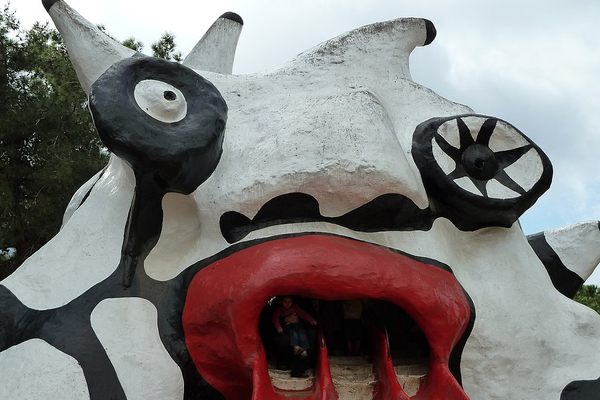
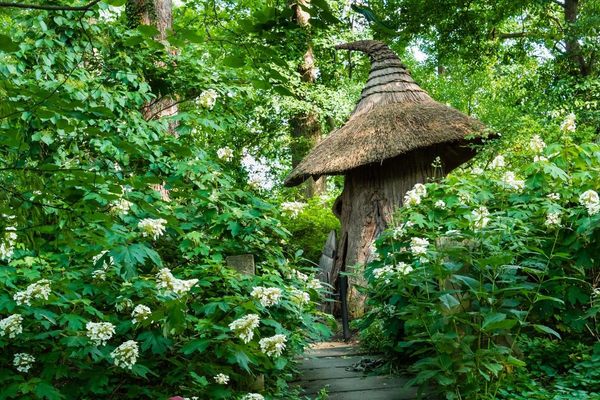




Follow us on Twitter to get the latest on the world's hidden wonders.
Like us on Facebook to get the latest on the world's hidden wonders.
Follow us on Twitter Like us on Facebook